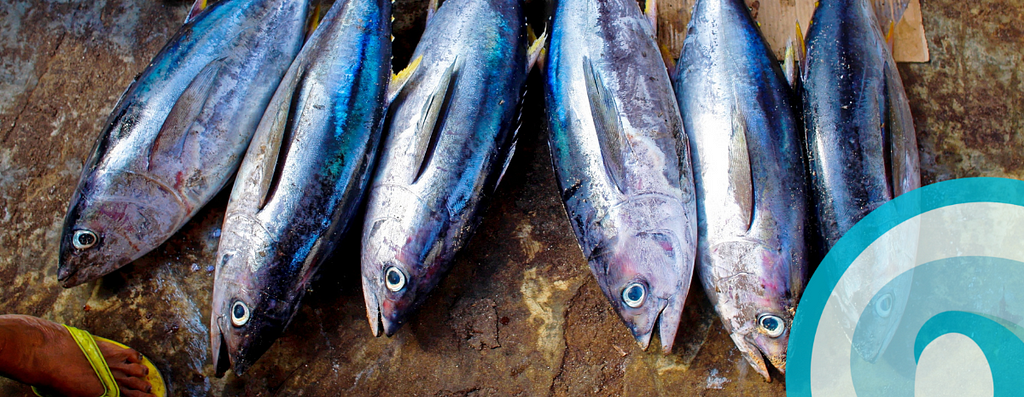AMA 25 — Bycatch with Simon Hilbourne, Founder of Fish Free February
AMA 25 — Bycatch with Simon Hilbourne, Founder of Fish Free February

When you throw your fishing line into the water, you never know what might bite. In the commercial fishing industry, this happens on a much larger scale than in your backyard pond. Up to 40% of all fish catch around the world is accidentally caught and thrown back into the ocean, “either dead or dying,” according to the World Wildlife Fund–and this figure only includes what we can actually count.
Marine ecosystems are complex, layered, and interconnected systems of animal and plant species that rely on each other for survival. Fishing practices that drag nets over long distances disrupt the delicate balance of ocean life by capturing everything in their wake–including unintended species. These non-targeted species that fishermen accidentally capture in their nets are referred to as bycatch.
This is an ocean conservation problem that needs our attention- which is why we’re excited to announce our next AMA guest. Join us on Wednesday, January 26th at 11:00 am UTC for a conversation on bycatch and the fishing industry with marine biologist, ocean conservationist, and founder of Fish Free February Simon Hilbourne (@s.hilbourne). You can tune in live with your questions on our Instagram, or watch the playback later on IGTV.
During our live conversation with Simon, we’ll discuss the impacts of bycatch, overfishing, and the seafood industry. In addition to being a marine biologist, Simon is a seasoned scuba diver and underwater photographer, with experience in some of the most beautiful marine habitats on Earth.
Simon founded Fish Free February to bring more awareness to the impacts of the seafood industry on our oceans. Of course, the campaign also encourages sustainable and reduced seafood consumption. By promoting a month-long personal pledge to stop eating seafood, Fish Free February aims to highlight specific horrors caused by the fishing industry (including the phenomenon of bycatch).
Bycatch can include fish of the wrong type, sex, or size than originally intended by the fishing operation. It can also include animals like dolphins, sharks, seabirds, and sea turtles. Protected and endangered species are put at risk, as these unintentionally caught creatures are often thrown overboard or in the garbage after their death. Our conversation on Wednesday will center around this challenge, and what individuals and industry players can do to address it.
Fish Free February’s website is full of resources to help you learn more about the impacts of the commercial fishing industry on the planet. Book and documentary recommendations listed on their Resources Page may inspire you to take the #FishFreeFebruary pledge yourself. They even showcase country-specific guides for sustainable fish consumption, should you choose only to reduce and continue eating seafood products.
To take the pledge for a #FishFreeFebruary, visit www.fishfreefebruary.com. You can also follow @fishfreefebruary for resources and encouragement during your fish-free month!
If you’re an organization looking to promote a #FishFreeFebruary, a Digital Campaign Toolkit can be found on their website with tons of information on overfishing, bycatch, mislabelling, plastic pollution, aquaculture, and the human rights violations associated with the fishing industry. The toolkit also includes plenty of sample social media posts for your organization to adapt and share. Fish Free February makes it easy for individuals and organizations to raise awareness and encourage participation in the month-long boycott.
If you have questions for Simon about bycatch, the fishing industry, or life underwater, send them to us on Twitter (@sea_token)! The top 5 questions will win $20 worth of $SEA, and we’ll ask them during our live interview on Wednesday.
SEA will be highlighting the issue of bycatch all week long on our Instagram and other social channels (@sea_token). Read more about the issue, and how it’s impacting ocean life, on our weekly blog.

Leave a Reply